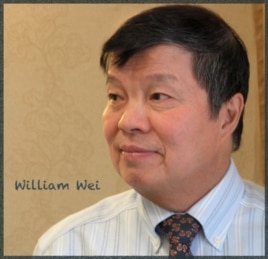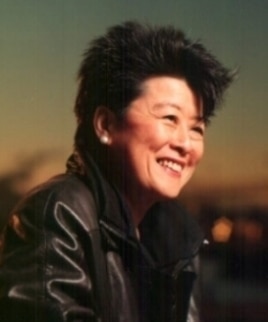 |
| Photo by Darcy Holdorf |
For consumer brands in China, a major battleground is the country's growing hypermarket segment. And the frontline troops are armed with mini-dresses and microphones.
Visit any Chinese Walmart, Carrefour or Tesco on a weekend, and there will be more than 100 promoters in the store dispensing samples and sales pitches. Their role reflects the shopping habits of middle-class Chinese, who are notoriously fickle toward brands.
"Chinese consumers know the brand name through media, but when they go to the store, they want to feel the product and get a detailed understanding before they make a purchase decision," said Alick Ying, business director at Always Marketing Services, which employs 15,000 full-time promoters across China.
The Shanghai-based WPP field-marketing agency, whose clients include Unilever, Kimberly-Clark, Kraft and Johnson & Johnson, hosted Ad Age at a Tesco hypermarket in Shanghai one recent Saturday morning.
A U.S. store has as many as 20,000 stock-keeping units, but a Chinese one can have up to 35,000, Mr. Ying said. Pair this with the tendency of Chinese shoppers to make more than 50% of purchase decisions in-store, and it's clear why brands must work hard to break through the clutter.
Retail growth
China is the world's third-largest retail market, behind the U.S. and Japan. Retail sales in the country have grown at least 16% each year between 2007 and 2011, though sales per capita remain low, according to a report from Smollan Group, another WPP field-marketing agency.
Mom-and-pop stores dominate and most Chinese still buy food in traditional "wet" markets. But the hypermarket segment is growing quickly, and it's fiercely competitive, with major Western players as well as those from Japan, Korea, Hong Kong and Taiwan. Domestic retailers are also expanding.
In the U.S., promoters are often older women handing out sausage slices on toothpicks. Meanwhile, China's PGs -- for "promoter girls" or "push girls" -- sport eye-catching uniforms, many with short hemlines. They range from the Quaker Oats promoter's blue minidress with frilly apron to the Yili "Children's Growth Milk" promoter's gold satin dress and white pumps.
Surgical masks cover their faces beneath the microphones they wear, speakers slung across the hip. (The masks are for hygiene purposes, since the promoters often hand out food and drink.)
Sometimes there are four promoters or more in one aisle, an aural assault on passing shoppers. The amplification is necessary to overcome the chaos of a Chinese store, which makes a day-before-Thanksgiving American supermarket seem civilized. The Tesco that Ad Age visited has 51 checkout counters. "Western consumers don't enjoy shopping at the hypermarket. They hate it. They want to spend 30 minutes there after work, fill up the car and then leave. Chinese consumers will bring their kids and turn it into a weekend leisure activity," said Serene Tang, who until recently was senior category manager-health and beauty for Tesco in China and previously worked for Tesco in the U.K. and Malaysia.
Lots of Renao
Western consumers "have more entertainment options. They can go to a bar to have fun. Going to the hypermarket is for buying the basics -- food and other necessities," she said. "But Chinese don't feel this way."
A Chinese hypermarket is claustrophobic to Western sensibilities, but local consumers expect renao. (Pronounced "ruh-now," it is literally translated as "heat and noise" and refers to a lively atmosphere like that of a traditional market.) Retailers have tried to replicate renao inside their stores. If it's too sedate, consumers will suspect products aren't fresh or that the store has a bad reputation.
The promotions girls are an important element of the atmosphere. Their amplified sales pitches must win over shoppers who are generally drawn to hypermarkets by the fresh offerings -- vegetables and fruit, eggs sold by weight, meat ranging from unrefrigerated lamb carcasses dangling from hooks to live fish in tanks.
It's apparently a powerful strategy: promotional products (including sale items, bonus activities, sampling and so on) make up 30% of hypermarket sales in terms of value, Ms. Tang said.
At the Shanghai Tesco, a young woman promoting Yili's blended-milk drink called out to an older shopper: "This contains red beans and peanuts, it's good for your blood and especially good for seniors." She offered a sample in a paper cup and tried to entice the woman with an orange hand towel, free with purchase.
In the personal-care section, 21-year-old promoter Ruan Lingli is giving out folding shopping trollies to a steady stream of customers -- free with the purchase of $14 in Unilever shampoo and conditioners.
"For older people, I recommend Hazeline because it's a brand that they recognize. For women who have dyed or permed hair, I'll suggest Dove. And men tend to have oily hair or dandruff, so I tell them about Clear ," she said, speaking in the rapid-fire manner of someone who makes sales pitches for much of her 16-hour shift.
A stylish middle-aged woman stopped in front of the Colgate "Optic White" toothpaste display, then asked promoter Ge Yunxia: Is this the toothpaste being promoted on TV by (Taiwanese celebrity) Big S? What flavors does it come in? Is it new?
The woman inspected the box while Ms. Ge, 24, presented the benefits. "Other whitening toothpastes might work well, but using them constantly will harm your enamel. Our toothpaste works from the inside out. The results won't be as apparent immediately, but you'll notice your teeth whitening over time as you continue to use it," she said.
Satisfied after their three-minute exchange, the customer walked away with a tube of the $4 toothpaste. |Adage.com




























